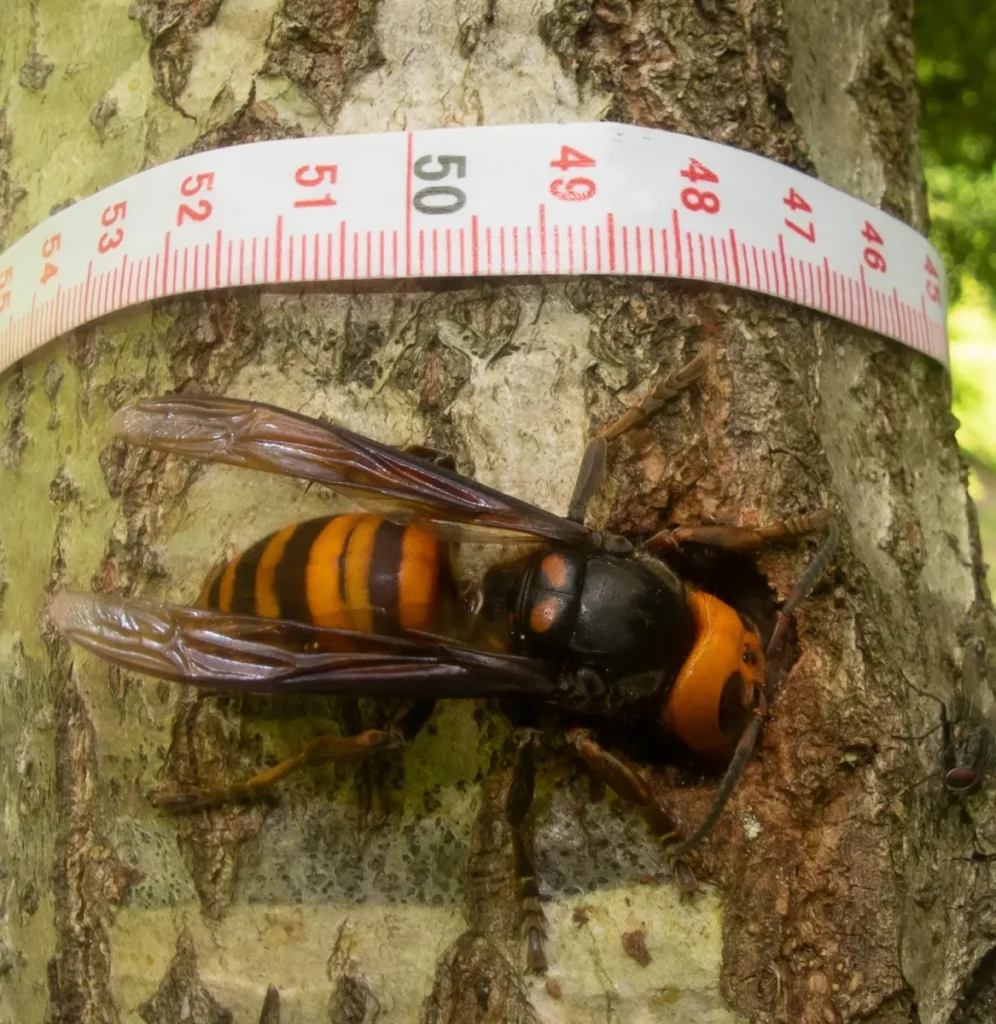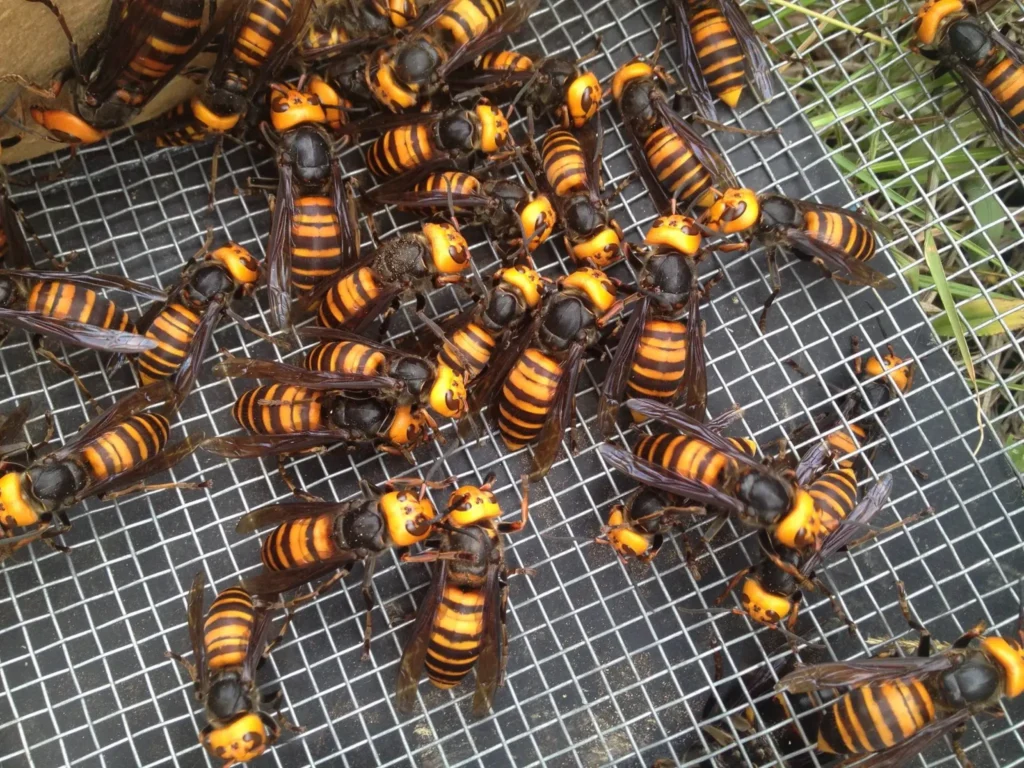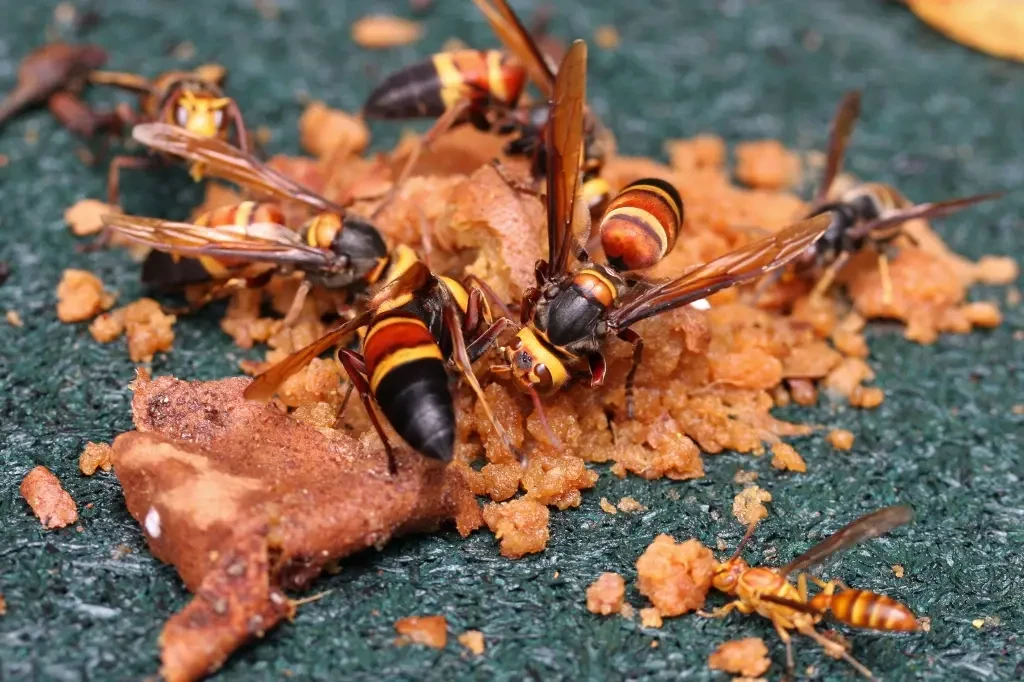The giant Asian hornet (Mandarin Vespa), also known as the "killer hornet," is the largest member of the wasp family. This impressive insect, native to Asia, is known for its powerful weapon, a poisonous sting, aggressive behavior, and cohesion in attacking other insect colonies, including bees.

Classification
• The Kingdom: Animalia
• Type: Arthropoda
• Class: Insects (Insecta)
• Row: Hymenoptera
• Family: Wasps (Vespidae)
• Gender: Hornets (Vespa)
• View: Giant Asian hornet (Mandarin Vespa)
Appearance
📏 Sizes
- Body length: up to 5 cm
- Wingspan: up to 7.5 cm
- Blade length: up to 6 mm
🎨 Description
- Massive body with noticeable orange, yellow and black stripes
- Large orange eyes and broad head
- Long jaws capable of dismembering prey
- Strong wings and long legs for fast and maneuverable flight
Range and habitat
🌍 Area
- East and Southeast Asia: Japan, China, Korea, Thailand
- Cases of introduction to North America (in particular, the United States and Canada) have been recorded
🌿 Living environment
- Forests with a humid climate
- Often create nests in underground cavities, between tree roots or under stumps
- They can settle near human settlements

Behavior and environmental role
👥 Social structure
- Form large colonies with a clear hierarchy: queen, workers, and males
- Very aggressive when defending the nest
🧠 Behavioral features
- They are capable of collective attacks, especially on bees - one group of hornets can destroy a hive of honey bees in less than an hour
- They communicate with the help of pheromones, which allows them to coordinate joint actions
Food
🍖 Ration
- Predators: other insects, especially bees, are the main prey
- They also hunt caterpillars, mantises, and locusts
- Worker hornets do not eat meat directly, but feed the larvae, which instead secrete a protein fluid that is eaten by adults
Reproduction
💞 Mating season
- It happens in late summer - males mate with young females who will become future queens
🏚️ Nesting
- New queens overwinter in the soil or under tree bark
- In spring, new colonies are founded - one queen lays hundreds of eggs
Threats to humans
⚠️ Poison and bites
- Stings repeatedly, unlike bees
- The venom contains powerful neurotoxins and enzymes that cause severe pain, swelling, and allergic reactions
- The bite can be fatal for people with allergies or in case of multiple bites
🏥 Medical data
- In Japan, up to 30 deaths from bites of this species are recorded annually
- The bite resembles the sensation of a "hot nail" in the skin

Interesting facts
✔️ One hornet can kill up to 40 bees per minute
✔️ Their vision allows them to see the movement of prey at a distance of up to 100 meters
✔️ Although dangerous to humans, this species plays an important role in controlling populations of other insects
Conclusion
The giant Asian hornet is an incredibly powerful and dangerous insect that commands respect for its organization, strength, and adaptability. Although it is a threat to bee populations and, in rare cases, to humans, its presence reminds us of the vulnerability of ecosystems and the need for a balanced approach to interfering with nature.
